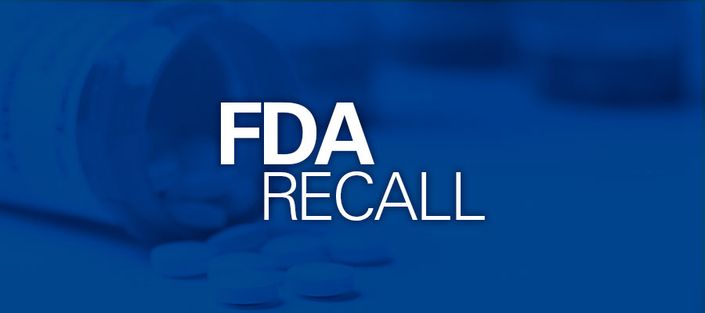Webinar Includes : All the training handouts , certificate ,Q/A and 90 mins Live Webinar
Who will Benefit
This 90-minute online course is intended for professionals in the Medical Device, Biotechnology, Pharmaceutical Industry. Although not presently stated in the draft , the same guide could be used by FDA Regulated Industries personnel
Personnel in the following roles will benefit:
- Information Technology Analysts
- QC/QA Managers
- QC/QA Analysts
- Clinical Data Managers
- Clinical Data Scientists
- Analytical Chemists
- Compliance Managers
- Laboratory Managers
- Automation Analysts
- Manufacturing Managers
- Manufacturing Supervisors
- Supply Chain Specialists
- Computer System Validation Specialists
- GMP Training Specialists
- Business Stakeholders responsible for computer system validation planning, execution, reporting, compliance, maintenance and audit
- Consultants working in the life sciences industry who are involved in computer system implementation, validation and compliance
- Auditors engaged in the internal inspection of labelling records and practices
Webinar Takeaways
- Learn how to identify “GxP” Systems
- Discuss the Computer System Validation (CSV) approach based on FDA requirements
- Learn about the System Development Life Cycle (SDLC) approach to validation
- Discuss the best practices for documenting computer system validation efforts, including requirements, design, development, testing and operational maintenance procedures
- Understand how to maintain a system in a validated state through the system’s entire life cycle
- Learn how to assure the integrity of data that supports GxP work
- Discuss the importance of “GxP” documentation that complies with FDA requirements
- Learn about the policies and procedures needed to support your validation process and ongoing maintenance of your systems in a validated state
- Understand the key components of 21 CFR Part 11 compliance for electronic records and signatures
- Know the regulatory influences that lead to FDA’s current thinking at any given time
- Learn how to conduct a risk assessment on computer systems that will provide the basis for developing a validation rationale
- Understand the need to include an assessment of a computer system’s size, complexity, business criticality, GAMP 5 category and risk, should it fail, to develop a cohesive and comprehensive validation rationale
- Learn how to assess risk, based on probability of occurrence, severity of impact, detectability and mitigation, along with technical and procedural controls that can help minimize risk
- Learn how to best prepare for an FDA inspection or audit of a GxP computer system
- Understand the importance of performing a thorough vendor audit to ensure oversight to the products and services they deliver
- Finally, understand the industry best practices that will enable you to optimize your approach to validation and compliance, based on risk assessment, to ensure data integrity is maintained throughout the entire data life cycle
- Q&A
Course Overview
FDA’s recent focus on data integrity during computer system validation inspections and audits has brought this issue to the forefront of importance for compliance of systems used in regulated industries. These include all systems that “touch” product, meaning they are used to create, collect, analyze, manage, transfer and report data regulated by FDA.
All structured data, including databases, and unstructured data, including documents, spreadsheets, presentations, images, audio and video files, amongst others, must be managed and maintained with integrity throughout their entire life cycle. It is a risk-based approach that leads to the best results and compliance with FDA’s expectations.
Computer system validation has been regulated by FDA for more than 30 years, as it relates to systems used in the manufacturing, testing and distribution of a product in the pharmaceutical, biotechnology, medical device or other FDA-regulated industries. The FDA requirements ensure thorough planning, implementation, integration, testing and management of computer systems used to collect, analyze and/or report data.
Electronic records and electronic signatures (ER/ES) came into play through guidelines established by FDA in 1997, and disseminated through 21 CFR Part 11. This code describes the basic requirements for validating and documenting ER/ES capability in systems used in an FDA-regulated environment.
In the early 2000s, FDA recognized they could not inspect every computer system at every regulated company and placed the onus on industry to begin assessing all regulated computer systems based on risk. The level of potential risk, should the system fail to operate properly, needed to be the basis for each company’s approach to developing a validation approach and rationale as part of the planning process. System size, complexity, business criticality, GAMP 5 category and risk rating are the five key components for determining the scope and robustness of testing required to ensure data integrity and product safety.
We will explore the best practices and strategic approach for evaluating computer systems used in the conduct FDA-regulated activities and determining the level of potential risk, should they fail, on data integrity, process and product quality, and consumer/patient safety. We will walk through the System Development Life Cycle (SDLC) approach to validation, based on risk assessment, and will also discuss 21 CFR Part 11 and the importance of managing electronic records and signatures appropriately.
We will also walk through the entire set of essential policies and procedures, as well as other supporting documentation and activities that must be developed and followed to ensure compliance. We will provide an overview of practices to prepare for an FDA inspection, and will also touch on the importance of auditing vendors of computer system hardware, software, tools and utilities, and services.
Finally, we will provide an overview of industry best practices, with a focus on data integrity and risk assessment that can be leveraged to assist in all your GxP work.
Why Should You Attend
This webinar will help you understand in detail Computer System Validation (CSV) and how to apply the System Development Life Cycle (SDLC) Methodology when validating computer systems subject to FDA regulations. This is critical in order to develop the appropriate validation strategy and achieve the thoroughness required to prove that a system does what it purports to do, and a key element is a thorough risk assessment.
It also ensures that a system is maintained in a validated state throughout its entire life cycle, from conception through retirement, making it critical to continue assessing risk as changes are made. We will discuss the phases within the SDLC, and how these form the basis for any CSV project. The importance of the sequence of steps will also be covered.

Faculty Carolyn Troiano
FDA Compliance Consultant for Validation, 21 CFR Part 11 (Electronic Records/Signatures) and Data Integrity
- Midlothian, Virginia, United States
My experience includes 34+ years in IT/ Business, Marketing & Compliance leadership and management roles at a variety of Fortune 100 companies, across multiple industries.
My successes include building and managing teams and business units at multiple “greenfield” sites in the pharmaceutical, biotechnology and IT consulting industries, as well as in the public sector. I have weathered numerous layoffs, mergers and acquisitions, and demonstrated my very strong leadership skills in helping staff get through difficult times.
My role has often been that of a liaison between technical and business staff, translating business needs into people, process and technical solutions, and developing ROI and risk models used to support funding.



